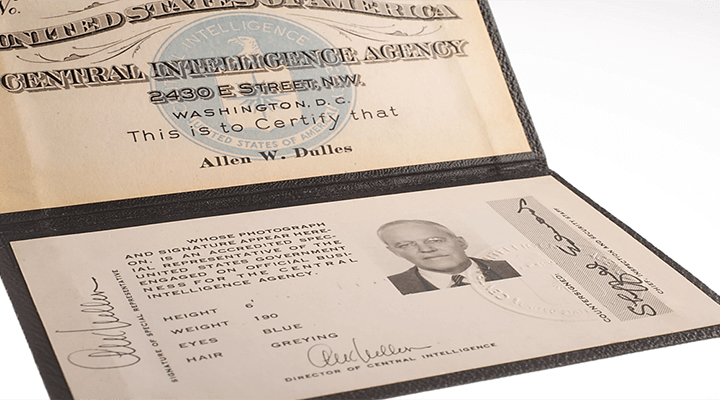Among museum after museum and monument after monument in and around the nation’s capital, the CIA Museum is one you’d want to visit if you find yourself in the area. But, you can’t. It’s not open to the public. No worries, the Agency provides a virtual insider’s view, and you don’t even have to come to Washington.
A SPY LEGACY
“We disbanded our intelligence [after both world wars] and then found we needed it,” former CIA Director William E. Colby said, “Let’s not go through that again. Redirect it, reduce the amount of money spent, but let’s not destroy it. Because you don’t know 10 years out what you’re going to face.”
Perhaps that sentiment is behind Colby’s efforts in 1972—the year after, incidentally, the Pentagon Papers were leaked—to preserve CIA-related “items of historical significance to create ‘a very selective accumulation of truly unique items.’” That was Colby’s vision for the CIA Museum. Today, and thanks to Director Colby and many generous CIA agents of years past, the CIA Museum holds about 3,500 items from around the world. They tell the story of the lives of many, many CIA agents who have donated their personal treasures. And it’s really something to see.
INSIDE the cia museum
Inside the CIA museum, you’ll find an amazing array of artifacts like “clothing, equipment, weapons, insignia and other memorabilia that serve as tangible testimony to the Agency’s history.” And you’ll see how much CIA science and technology research has contributed to the very public technology we have today. “Many of the objects the Museum holds,” the virtual site explains, “were designed, manufactured and used specifically for intelligence operations.” Museum galleries focus on Afghanistan and the War on Terror, the history of the Office of the Strategic Service, the Cold War, CIA analysis, and science and technology.
STEM in the cia
Experts in science and technology, engineering and math, are invaluable to any organization working to stay on top of any global game. The same is true, of course, for the CIA, and the Agency takes understandable pride in its research and development.
“Among the nation’s greatest secrets,” the Museum virtual site explains, “are those involving the CIA men and women who apply their skills and expertise in pure science, applied engineering, master craftsmanship, operational tradecraft, and linguistics to provide America’s leaders with critically important intelligence on the world.” Indeed, it’s not surprising an entire gallery of the museum is dedicated to Science and Technology.
“The items displayed [in the Science and Technology Gallery] were designed by some of America’s most advanced thinkers,” the site explains. These CIA professionals were expert at “adapting existing technologies or inventing new ones” to meet the Agency’s intelligence requirements. the —selflessly putting themselves in the service of freedom.”
take a VIRTUAL TOUR of the cia
If any of that sparks your interest, visit the CIA’s Museum. As the Agency explains, “Please note that because the Museum is located on the CIA compound, it is not open to the public for tours.” But there’s no reason you can’t enjoy a virtual tour, and then check it out for yourself once you’re hired.




